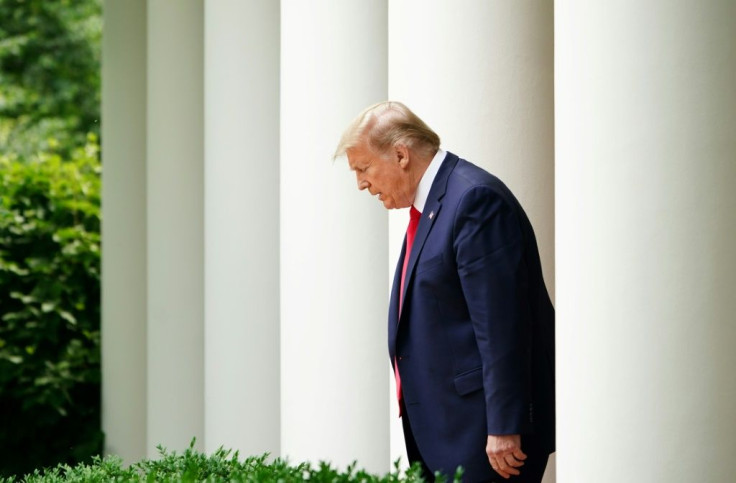Trump Hid Inside Underground Bunker As George Floyd Protests Raged Outside White House
KEY POINTS
- The U.S. Secret Service hid Trump inside the White House's underground bunker to protect him from angry demonstrators
- Trump remains cooped-up in the bunker for about an hour
- First Lady Melania Trump and son, Barron, were also taken to the bunker called the Presidential Emergency Operations Center
The United States Secret Service on the evening of May 29 took the unusual decision of protecting President Donald Trump from protesters by locking him up inside an underground, bomb-proof bunker in the White House for about an hour.
Its decision implied a fear that protesters demanding justice for George Floyd might break into the building and endanger Trump. Late Friday evening, a large number of protesters were struggling to get past uniformed Secret Service agents confronting them at Lafayette Park across from the White House.
First Lady Melania Trump and son, Barron, were also taken to the bomb-proof bunker called the Presidential Emergency Operations Center, said The New York Times. The bunker was strengthened by the administration of former president George W. Bush to withstand the massive impact of a passenger jet crashing into the White House, which was what happened to the Pentagon on 9/11.
The decision to ensconce Trump inside the bunker was taken when the number of protesters and Secret Service agents outside the White House continued to grow. The "assault" on the White House began at 10:00 p.m. ET, Friday.
What initially began as protesters confronting uniformed Secret Service agents and yelling at them later turned into a contest to defend the metal fences set-up in Lafayette Park. Agents were pelted with plastic water bottles and other objects as protesters tried to get past them.
The anger among protesters gradually melted away some five hours later. The Secret Service later expanded their perimeter and barriers around Lafayette Park across from the White House, and arrested six people.
White House insiders said Trump and his family were unnerved by their experience Friday night when protesters were threatening to force their way inside the White House grounds. A few hours after the protests outside the White House ended early Saturday morning, Trump tweeted he was safe, and praised the Secret Service for protecting him.
He admitted he couldn't have felt "more safe" even as protesters massed outside the White House. Trump, however, opened himself to a mountain of criticism by tweeting protesters would have been met by vicious dogs and weaponry they had never seen had they broken into the White House.
Police in Alabama let loose dogs on African-Americans fighting for civil rights in the 1960s, making Trump's statement a racist declaration. Trump then went on a Twitter rant, blasting protesters, lending his support for the "majority of police officers" and blaming Antifa and the "radical left" -- but without offering any proof -- for stoking the riots and property destruction.

© Copyright IBTimes 2024. All rights reserved.





















